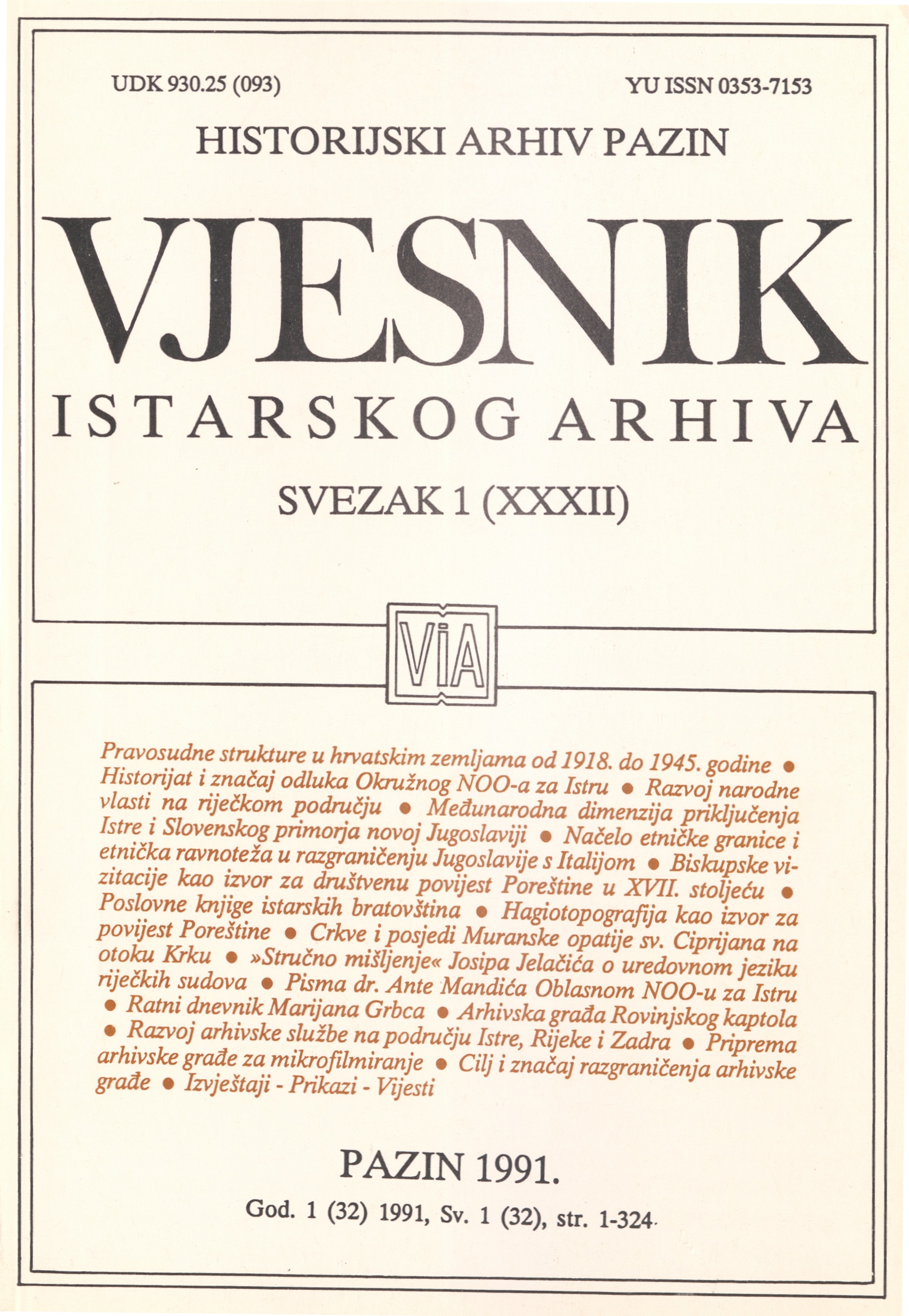Business Books of Istrian Brotherhoods as Important Reference Sources for the Studies in Social and Economic History
Abstract
The work is focused on the activities of the Istrian brotherhoods in the social and economic areas and their importance in nearly all spheres of the life in Istria in the Middle Ages and well into the New Age. The main sources in the study of the Istrian brotherhoods are their business books and the reports by Venetian clerks and the bishops’ ad limina communications. Although preserved in a relatively big number and in good repair, the brotherhood books have been little used and for that reason there is still no comprehensive study on the Istrian brotherhoods. Brotherhoods were voluntary laymen’s associations intended to deal with social, financial and intellectual interests of specific groups. Although rooted in religion and governed by church authorities (for example, their establishment, their internal regulations and activities were subject to the bishop’s approval), the scope of their work went far beyond the ecclesiastic boundaries. Thus a part of their revenue was lent to both members and non-members (at the interest rate of 6 per cent which remained the same for centuries) and a part was used for care of sick and retired members and to help the most needy (some brotherhoods supported almshouses). The rest of their revenue was invested in the construction, decoration and maintenance of church buildings. The brotherhood income stemmed from their movable property and real estate (ploughfields, meadows, vineyards, olive groves, woods, buildings, cattle, etc.) either leased or exploited by members themselves. The financial weight of brotherhoods was quite impressive, as illustrated by their 1741 balance sheet, which showed an amount of 729,320 Lires of available funds, the biggest in the then Venetian Istria, exceeding even the municipal budgets. It is important to note that this money was wholly reinvested where it was made, unlike the state tax levies normally ending up in the metropolis. All these activities branching into virtually every section of the community as well as the sheer number of brotherhoods suggest that the brotherhoods were actually performing a good part of the duties supposed to be covered by civil services, which were inefficient and existed as a formality only. This fact was particularly evident at the times of crisis when brotherhoods were flourishing (16th through 18th centuries). These grim periods of the Istrian history were characterized by a rift between two different political systems, economic crises, epidemics, warfares, depopulation, the influx of immigrants, banditry, robberies, etc. It was during these critical periods that brotherhoods were cropping up in the villages and towns of both Venetian and Austrian parts of Istria. It can be said with a fair amount of certainty that the bulk of the Istrian population was involved, one way or the other, in the brotherhood work. The state authorities, especially those of Venice, were doing their best to impose taxation controls on the brotherhoods’ business operations. That is why they requested them to keep books and cadastre records. However, the brotherhoods were often successful in evading state and church controls. Thus they made only essential entries into their books, just enough to meet the legal requirements, by declaring incomes accounting for expenditures or by preparing cadastres with general and rather vague real estate data, so that it was hard to assess the actual value of their property and revenue. As an example the author gives a cadastre book of seven brotherhoods from Tar (1729) which shows the number of plots owned, but not their size and quality nor the estimated profit that can be gained from them. In 1750, under the pressure of authorities, a little more detailed cadastre was prepared by the community.
Downloads
Published
Issue
Section
License

This work is licensed under a Creative Commons Attribution-NonCommercial 4.0 International License.

